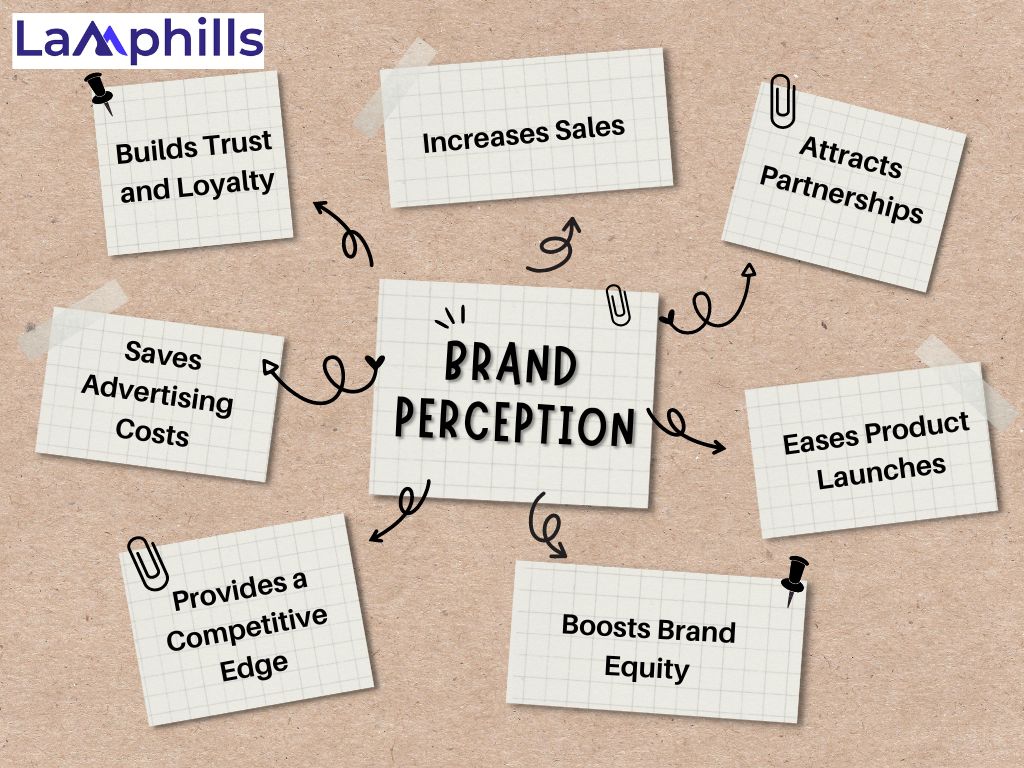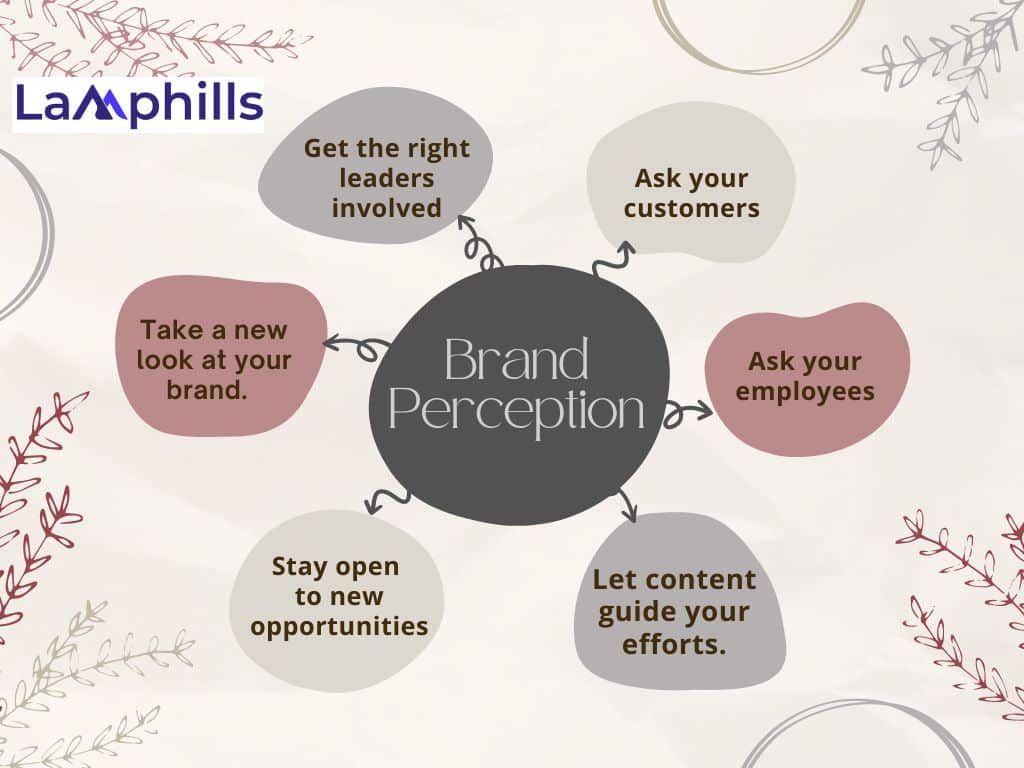Think about your shopping habits. Why do you buy some products but not others? Most likely, it’s because of how you feel about the brand or what you think about the company. That feeling is influenced by “brand perception.”
62% of customers feel a strong connection to a brand before choosing. Once people have a strong opinion about a brand, it’s hard to change it. That’s why companies focus on creating a good image from the start.
Even if you know your products are better, how people see your brand will decide if they choose you or your competitor. That’s why it’s important to understand what people actually think about your brand and whether it matches how you want it to be seen.
In this article, we’ll explore brand perception, how to measure it, and how you can use the results to make your brand better. Keep reading.
Key Points
- How customers feel about a brand can make or break their purchasing decisions. A strong brand image is crucial for success!
- When customers trust a brand, they’re more likely to stick with it and recommend it to others, boosting sales and partnerships.
- Brands can create lasting impressions by appealing to sight, sound, smell, taste, and emotion, making customer experiences memorable.
- Regularly check how people view your brand through surveys and social media. Use this feedback to make positive changes!
- Successful brands like Domino’s and Snickers transformed their images by listening to customers and creatively marketing their products.
What Is Brand Perception?
Imagine walking into a store and instantly feeling a certain way, maybe trust excitement, or even doubt. This feeling is called “brand perception.” It’s how customers see and connect with a brand. Brand perception isn’t just about the products or services a company sells; it also includes people’s feelings, opinions, and experiences with that brand.
Also, it’s not about what the company says it does but how customers actually experience it. This perception comes from using the product, hearing about it, and from its reputation, including what people say on social media and in person.
Whenever a customer buys a product, read a review, talk to their friends, or interact with your employees, they form an opinion about your brand. And you can influence this by carefully creating a brand personality that reflects your company’s vision, mission, and culture. This helps customers connect with your brand.
To make a strong brand impression, try engaging your customers’ five senses. This will create a deep and lasting impact. Here’s how you can use the senses:
- Sight: Memorable logos (like Coca-Cola or McDonald’s) and fun, high-quality commercials.
- Sound: Catchy jingles or phrases (like “Give Me a Break!” from Kit Kat) that stick in people’s heads.
- Smell: Smell can trigger emotions and memories. For example, the scent of bacon from a café or the unique smells airlines use to improve customer experience.
- Taste: Offering free samples or special deals so customers can try your products.
- Emotion: Ads that create strong feelings, like heartwarming Christmas commercials.
Brand perception surveys can also help you understand how your customers, employees, and other stakeholders see your brand.
Why Is Brand Perception Important?

A few years ago, I had an experience that changed my thoughts about brands. I was looking for new shoes and found two pairs that looked almost the same. One was from a famous brand, and the other was from a brand I didn’t know much about.
Even though the second pair was cheaper, I liked the famous brand more. It wasn’t about how they looked or felt. It was about trust. The renowned brand had a good reputation that made me feel sure about its quality. That’s when I realized how we see brands affects our choices, even if we don’t notice it.
Here are some key benefits of having a strong brand perception:
1. Builds Trust and Loyalty: When customers trust your brand, they are more likely to stick with it and recommend it to others.
2. Increases Sales: Customers are more willing to buy from a brand they trust, even if it costs more.
3. Attracts Partnerships: Other businesses are likelier to work with brands with a positive reputation.
4. Eases Product Launches: Introducing new products is easier when people already trust your brand.
5. Boosts Brand Equity: A recognizable and trusted brand adds extra value, making customers more confident buying.
6. Provides a Competitive Edge: Strong brand perception helps your business stand out, even when competitors offer similar or more innovative products.
7. Saves Advertising Costs: With a good reputation, you rely less on heavy advertising since your brand speaks for itself.
In summary, positive brand perception helps build customer trust and gives your company an advantage over competitors.
Do you want to know what your customers think about your brand? You should learn to measure brand perception and use that information to improve your brand.
How to Measure Your Brand Perception
Brand perception combines consumers’ thoughts, emotions, and experiences when they think of or interact with a brand. It’s not just about what the company says about itself but what others believe based on their interactions and the reputation the brand has built.
For example, Apple is perceived as innovative and premium because of its products and how it positions itself through marketing, design, and customer service.
It’s important to regularly check how people view your brand, track it over time, and see what helps improve it. Here are a few ways to measure brand perception:
#1. Brand Focus Groups and Forums
This method may seem old-fashioned, but it still works well. Bringing small groups of people together, either in person or online, allows you to hear directly from customers about what they like and dislike about your brand. It gives you a clear idea of how customers feel and helps you understand what’s working and what needs improvement.
Online forums are also helpful in complex business chains, like when a manufacturer doesn’t deal directly with customers but relies on retailers. These forums help fill that gap by providing customer feedback, which can guide product improvements and strengthen the brand.
#2. Brand Perception Surveys
Surveys are a simple way to learn who your customers are and what they think of your brand. They’re easy to set up and let customers share their opinions through targeted questions. Using tools like net promoter scores (NPS) and customer satisfaction (CSAT), you can get reliable data on brand perception. It’s best to run these surveys at least every three months, and you can also align them with your advertising campaigns to see how those impact your brand.
To understand how your customers really see your brand, it’s important to ask them directly. A simple brand perception survey can give you valuable insights into what you’re doing well and where you can improve. Below, you’ll find a basic survey template that you can use to gather feedback and measure how people view your brand. Feel free to customize it to fit your needs!
#3. Social Media Monitoring
I’ve noticed that I often form opinions about brands based on what others post online, whether through Instagram stories or Twitter threads.
People share their true feelings on social media, so it’s essential to keep an eye on mentions and reactions to your brand on platforms like Facebook, Twitter, LinkedIn, and Instagram. Social media data can give you valuable insight into how your brand is doing online. When you know what people are saying, you can respond quickly and grow your social presence faster. The best tools provide a single dashboard to monitor your social media presence and offer insights like:
- Which social media platforms help your brand the most (and the least)
- What type of content gets the most views
- The number of mentions and shout-outs for your brand, often in real time
- Reviews and comments from users
- How much reach do influencers give your brand
- Dwell time (how long people spend looking at your brand)
- Which paid content performs the best
#4. Customer Reviews
Reviews are another clear indicator of how people perceive your brand. Whether on websites like Yelp, Google, or Amazon, reading what customers say about your product or service can help you understand their perception. Positive reviews signal trust and satisfaction, while negative reviews highlight improvement areas.
I once bought a kitchen gadget after reading countless positive reviews. The reviews mentioned the product’s durability and efficiency, ultimately convincing me to purchase it. Customer reviews can offer a raw, unfiltered look at how people view your brand.
#5. Net Promoter Score (NPS)
NPS is a popular method of measuring brand perception. It asks customers how likely they are to recommend your brand to others, and it’s a quick way to gauge customer loyalty. A high NPS means customers see your brand positively, while a low NPS could mean you need to build trust or improve your offerings.
Many companies use NPS to track how well they maintain their brand perception over time. It’s simple but effective—after all, if people aren’t willing to recommend your brand, that says a lot about how they perceive it.
Once a company has measured its brand perception, it can take steps to improve it. Let’s learn some key strategies for strengthening a brand’s image.
How to Use Insights to Improve Brand Perception.

In the shoe store that day, I really saw how important brand perception is. Although both pairs of shoes looked the same in quality, I picked the famous brand because I felt good about it. This shows why brand perception matters.
If people trust your brand, they are more likely to choose you over others, even if they don’t know everything about your product. That’s why it’s important to improve how people view your brand using customer feedback and insights gathered through surveys, social media, or reviews.
By focusing on what people like or dislike, you can adjust your products, customer service, or marketing to better match their needs and expectations. This helps build a positive image and stronger connections with your audience.
Here’s how you can improve your brand perception:
#1. Take a new look at your brand.
If your research shows that people aren’t seeing your brand the way you want, it might be time to update it. Refreshing your brand can improve how customers see it. For example, Mastercard recently updated its logo, which was originally from the 1960s. The design company Pentagram, focused on making it look simple, connected, and smooth. The new colors stand out well against different backgrounds.
#2. Get the right leaders involved.
You’ll need a leadership team that believes in the brand’s new direction. Changing how people see your brand can take time and resources, so it’s important that leaders fully support it. Use real-time data dashboards to track progress and ensure they understand their impact.
#3. Ask your customers
You can’t decide how your customers see your brand – only they can. Send out customer feedback surveys and encourage your employees to have real conversations with customers. Make sure they listen carefully and report what they hear.
#4. Ask your employees
Your employees create, sell, and manage your brand’s products and services so they can offer valuable insights into brand perception. Include opinions from all departments when working on changing perceptions. You can use an anonymous online suggestion box to get honest feedback. Try our free template to help you get started.
#5. Let content guide your efforts.
After figuring out who your brand’s audience is, share the right content with them. Make sure your website, blog, and social media clearly communicate your brand’s message and are set up to reach as many people as possible.
#6. Stay open to new opportunities.
The business world is always changing, and things can shift quickly. Be ready to explore new directions that might not match your brand’s original focus. These new areas could offer great opportunities, so watch for them.
Famous Brand Examples of Brand Perception
Brand perception is affected by everything people experience with a company, from PR campaigns to packaging.
The examples below show how businesses can create feelings in customers so that what they stand for inside matches how they appear outside. You might even get ideas for designing your own logo!
Domino’s Pizza
In the early 2000s, Domino’s Pizza was struggling with a negative brand perception. Customers were dissatisfied with the taste and quality of the pizza, and it showed in sales. Instead of ignoring the problem, Domino’s took a bold step. They launched a marketing campaign admitting their shortcomings and promising to improve their recipe. They actively sought customer feedback, which they used to create a new, improved product.
This openness and commitment to bettering their product significantly changed public opinion. Today, Domino’s is seen as a brand that listens to its customers and delivers on its promises, proving that brand perception can be transformed with the right approach.
Snickers
In the past, snickers faced challenges with brand perception, as some consumers viewed it as just a candy bar without any real benefits. To change this perception, Snickers launched a clever advertising campaign highlighting the idea that “You’re not you when you’re hungry.” The ads featured humorous scenarios showing how hunger can affect a person’s mood and behavior.
By connecting the brand to the idea of satisfaction and energy, Snickers positioned itself as not just a treat but as a solution for hunger. This fresh approach helped change public opinion, and today, Snickers is seen as a go-to snack for a quick energy boost, reinforcing its message that it can help you feel like yourself again.
Volvo
The Volvo car was mainly seen as a brand for safe but boring cars, often considered boxy and dull. Volvo focused on modern design and innovative technology to change this perception, introducing stylish models with advanced features like electric cars and smart safety systems. They also promoted their commitment to sustainability, showing they care about the environment.
As a result, people now see Volvo as a brand that combines safety with modern style and eco-friendliness. This shift helped attract a new generation of drivers who value both safety and design, allowing Volvo to change its image from a dull brand to a premium one.
In summary, famous brands like Apple, Nike, Starbucks, and many others have shown us how important brand perception is. These companies are successful not only because of their products but also because of how people feel about them.
Over time, they have built trust, loyalty, and strong emotional connections with their customers. By understanding and shaping how people see their brand, they continue to grow and stay relevant in a competitive market.
Brand Perception Best Practices
Every business can do a few simple things to boost its brand reputation. Here are some tips:
1. Start with the Basics: Ensure you provide high-quality products and services. Always aim to meet or exceed customer expectations.
2. Effective Marketing: Use marketing to share the right message about your company with the right people. Create customer profiles to understand who your ideal customers are and what content will connect with them.
3. Focus on the Customer Journey: Map out the customer journey to see how people experience your purchasing process. This helps you ensure that every interaction leaves a good impression.
4. Use Social Media Wisely: Pay attention to what customers say online. Whether their experience is good or bad, they will share it on social media. Make sure to respond quickly and try to resolve any issues positively. Quick responses can improve your brand perception and attract potential buyers.
5. Don’t Underdeliver: Make sure your product does what you promise. Avoid making bold claims that you can’t back up. Also, check that your images accurately show what your product includes.
6. Listen to Feedback: You won’t see your product or service the same way your customers do. Pay attention to their feedback from social media, surveys, reviews, and forums. Understanding their concerns can help you improve your offerings.
7. Train Your Staff: Ensure your staff are well-trained and can answer customer questions confidently. Knowledgeable employees build trust and enhance your brand perception.
In summary, improving brand perception is all about meeting customer needs and building trust. By providing quality products, communicating well, listening to feedback, and training your staff, you can create a positive customer experience.
Wrap Up
Knowing what people think about your brand is essential for a successful business. It helps you build your brand, create strong marketing campaigns, and adjust when people’s opinions change.
Now that you understand how to measure brand perception, you can use that knowledge to make better decisions and grow your company.
Frequently Asked Questions.
What are examples of brand perception?
Brand perception isn’t just about how a brand looks; it also involves other senses like hearing, smell, taste, and touch. For example, it can include catchy jingles, a special smell for certain products, similar packaging styles, and unique tastes that belong to a specific brand.
What is brand identity vs. brand perception?
Brand identity is the core of a brand, including its personality and voice. Brand perception, on the other hand, is how customers see and think about the brand. Both of these elements work together to shape the brand’s reputation, trustworthiness, and recognition.
What is the brand perception of Coca-Cola?
Coca-Cola’s brand perception is very positive. Compared to other brands, more than 80% of consumers have a good view of Coca-Cola, with 91% rating it as very positive.
What is brand personality perception?
Brand personality is how a brand makes people feel and what they can relate to. When a customer keeps buying from a brand, they might develop a strong bond with it because of its personality. They may even see parts of their own personality in the brand, especially when comparing it to other brands.
What is an example of brand perception?
Brand perception is how people see a brand. For example, Apple has built a loyal group of customers who appreciate the look and quality of its products. By always focusing on making the user experience great and using memorable marketing, Apple has become known as a leader in the industry. This has created a strong and positive view of the brand around the world.
How long does it take to change how people see a brand?
It can take a while to change the way the public thinks about a brand. It usually takes about three to five years to replace their old perceptions.
What influences brand perception?
Brand perception is how customers understand and respond to messages, experiences, and interactions with a brand. Clear factors like advertising, recommendations from others, and customer service play a big role in shaping brand perception. Even less obvious things, like colors, can also affect how customers see your brand.
Similar Articles.
PR BUSINESS: Shaping Perceptions and Building Brands Through Public Relations (The People’s Voice)
Why Brand Authenticity Matters and How to Build It
Branding Process: A Step-by-Step Breakdown






